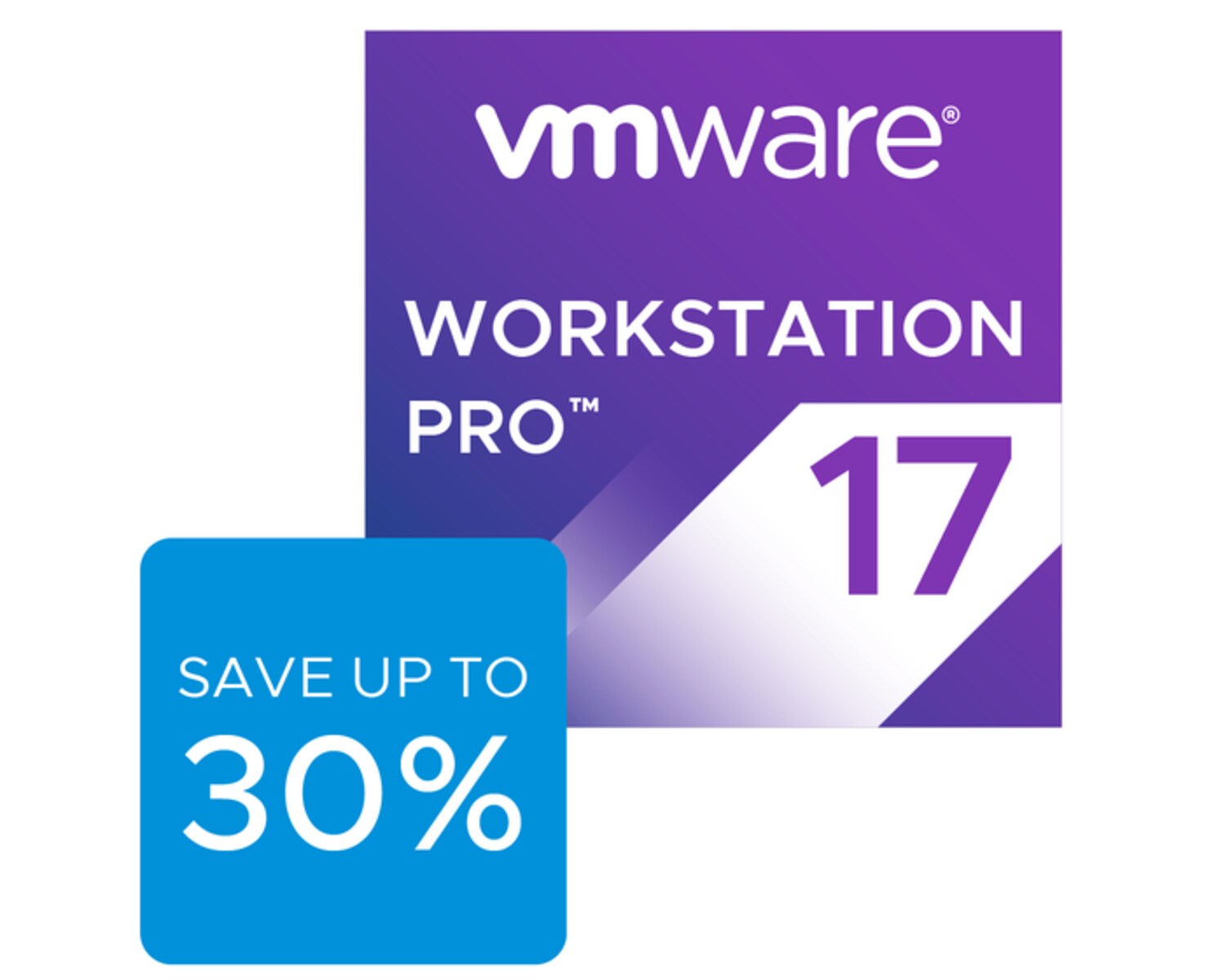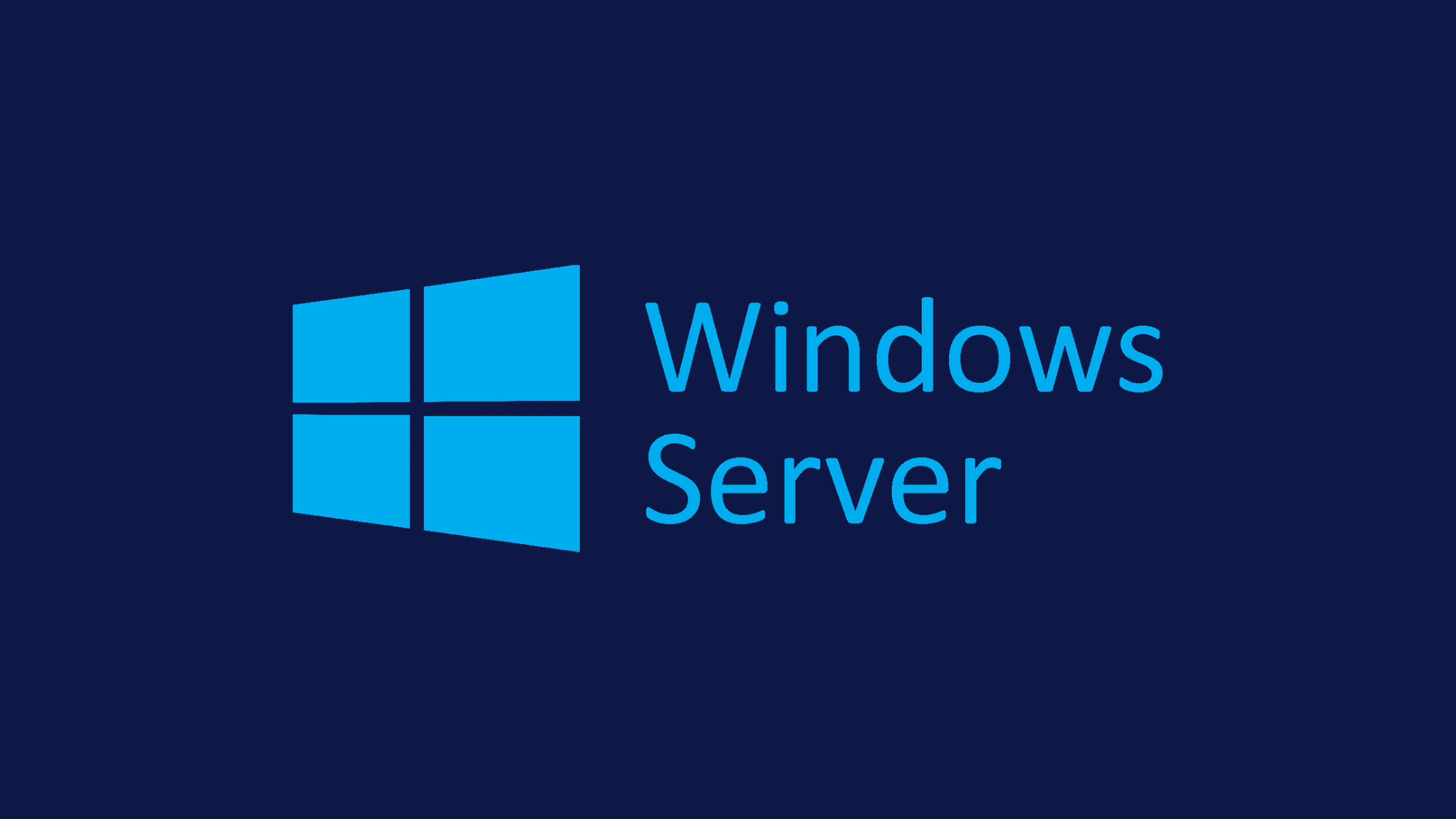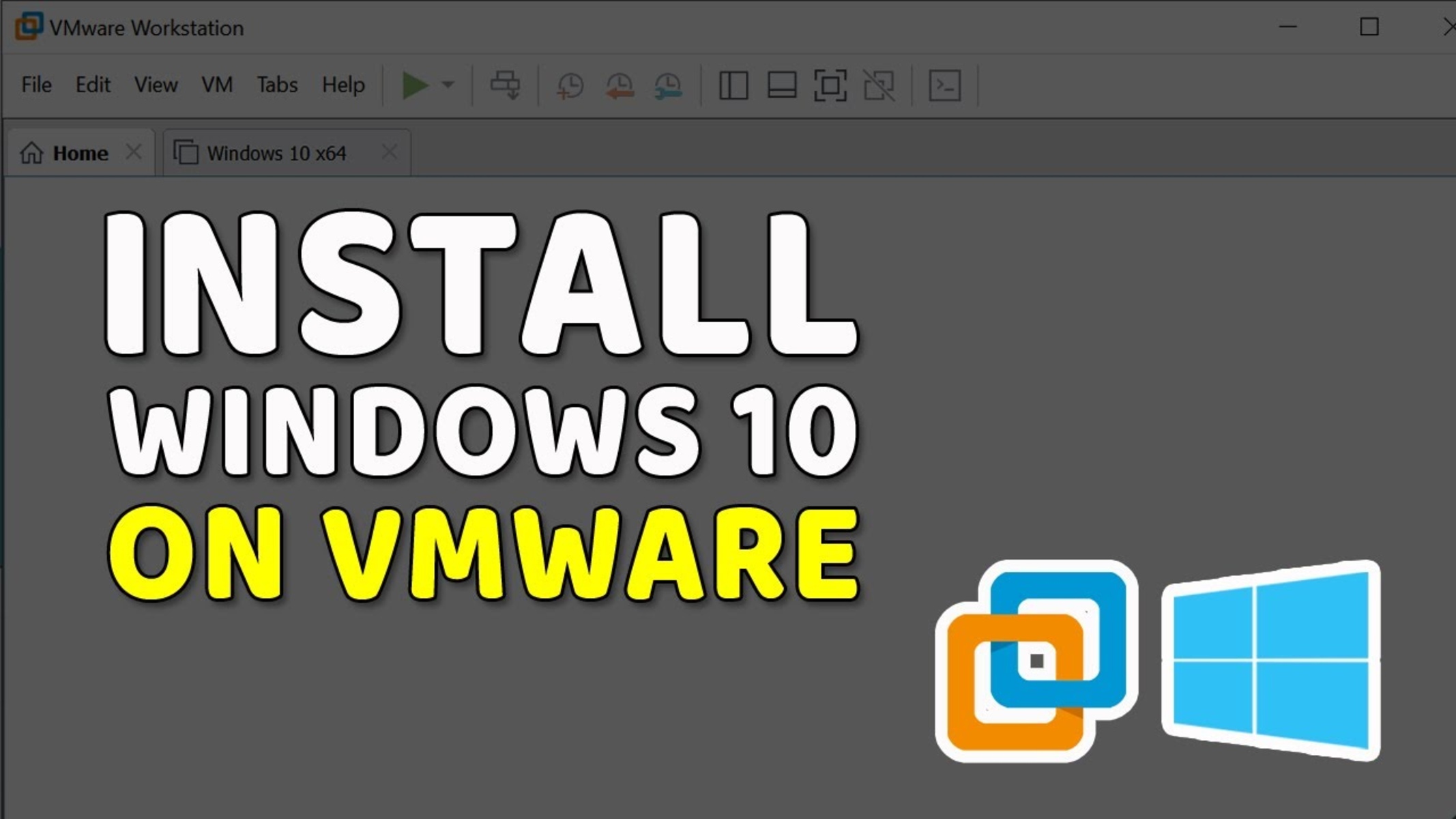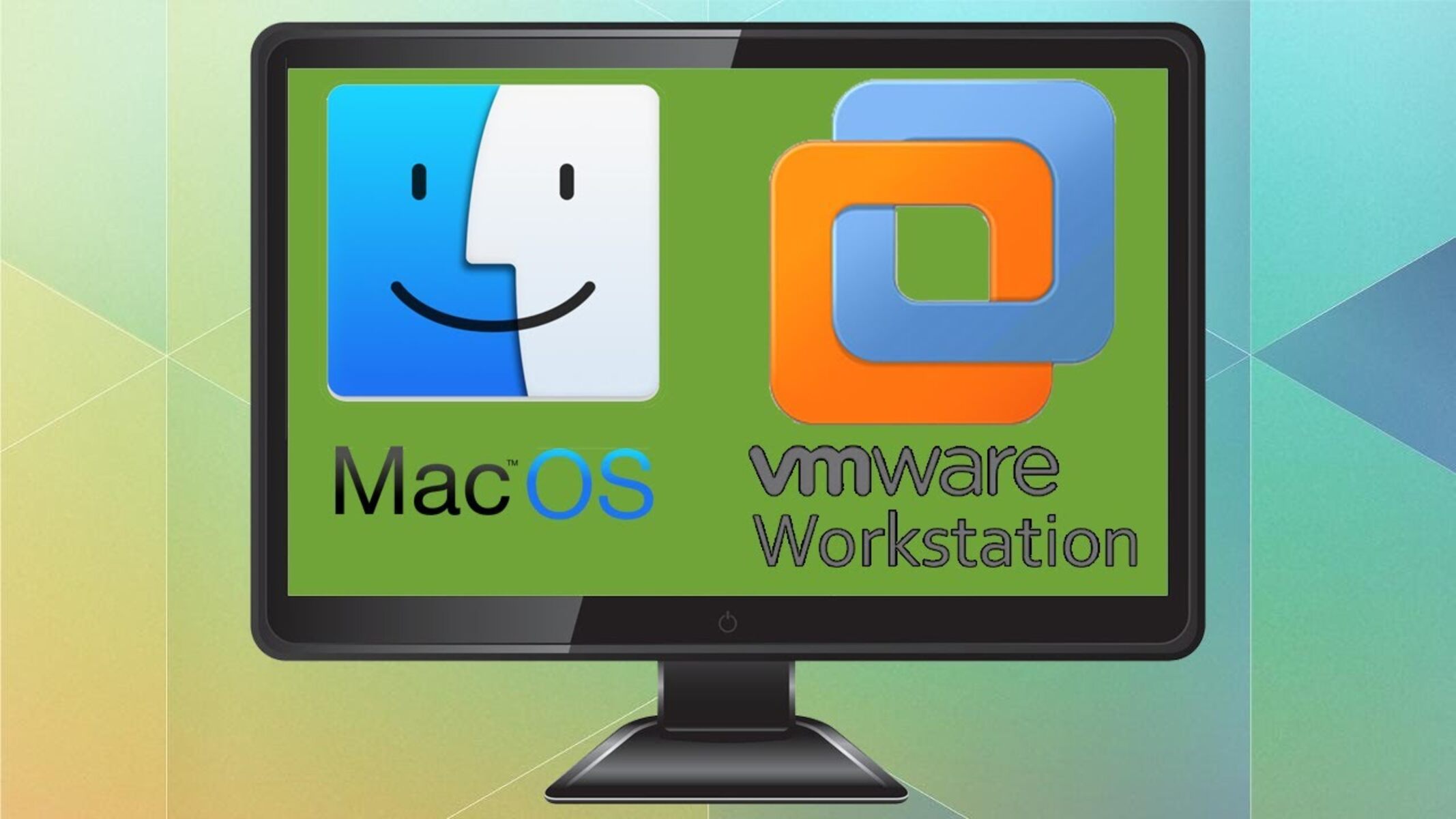Introduction
VMware Workstation is a powerful virtualization tool that allows users to run multiple operating systems on a single machine. Whether you are a software developer, IT professional, or simply an enthusiast looking to explore different operating systems, VMware Workstation provides a flexible and efficient platform to do so.
With its intuitive interface and robust features, VMware Workstation offers a seamless virtualization experience. It allows you to create and manage virtual machines (VMs) with ease, enabling you to run different operating systems, such as Windows, Linux, or macOS, concurrently on your host machine.
Not only does VMware Workstation enable you to run multiple operating systems, but it also provides advanced features like snapshot functionality, allowing you to capture the state of a virtual machine at a specific point in time. This can be incredibly useful for testing different software configurations or rolling back to a previous state if something goes wrong.
Additionally, VMware Workstation offers a range of networking options, allowing you to configure network connectivity for your virtual machines, simulate different network environments, and even connect USB devices directly to your VMs.
In this article, we will explore the various features and functionalities of VMware Workstation, providing you with a comprehensive guide on how to use this powerful virtualization tool. From installation to advanced configurations, we will cover everything you need to know to get started with VMware Workstation.
So, whether you are new to virtualization or already familiar with VMware Workstation, this article will serve as your go-to resource for understanding and harnessing the full potential of this software.
System Requirements
Before you begin using VMware Workstation, it is important to ensure that your system meets the minimum requirements for optimal performance. While VMware Workstation is a resource-intensive software, meeting these requirements will ensure a smooth and efficient virtualization experience.
Here are the system requirements for VMware Workstation:
- Operating System: VMware Workstation is compatible with Windows, Linux, and macOS. Make sure that your host operating system is supported by the version of VMware Workstation you are installing.
- Processor: A compatible 64-bit x86 or AMD64 processor with a minimum of 1.3 GHz or faster is required.
- Memory (RAM): VMware Workstation requires a minimum of 4 GB of RAM. However, for optimal performance and to run multiple virtual machines simultaneously, it is recommended to have at least 8 GB or more.
- Hard Disk Space: You will need free disk space to install the VMware Workstation software and enough space for the virtual machines you plan to create. VMware recommends a minimum of 1.5 GB on the system drive for installing the software and an additional 2 GB per virtual machine.
- Graphics: The host system must have a 3D-capable graphics card to fully enjoy the benefits of VMware Workstation’s 3D acceleration feature.
- Network: You will need a reliable network connection for accessing virtual machines, downloading updates, and using online features within the VMware Workstation software.
It is also important to note that VMware Workstation may have additional requirements based on the operating systems and software you plan to install on your virtual machines. Always refer to the documentation provided by VMware for specific requirements related to your use case.
By ensuring that your system meets these requirements, you can ensure a smooth and efficient experience with VMware Workstation. It is recommended to allocate enough resources to your host system to handle both the host and virtual machine workloads effectively.
Now that we have reviewed the system requirements, let’s proceed to the next section, where we will guide you through the process of downloading and installing VMware Workstation.
Downloading and Installing VMware Workstation
To get started with VMware Workstation, you will first need to download and install the software on your host machine. The following steps will guide you through the process:
- Step 1: Visit the official VMware website (www.vmware.com) and navigate to the VMware Workstation product page. There, you will find the option to download the software. Choose the appropriate version based on your operating system and click on the download button.
- Step 2: Once the download is complete, locate the installer file and double-click on it to start the installation process. You may be prompted to provide administrative privileges, so make sure you have the necessary permissions to install software on your system.
- Step 3: The VMware Workstation installer will launch, presenting you with the option to choose the installation location and customize the installation settings. You can leave the default settings as they are or modify them according to your preferences. Click on the “Next” button to proceed.
- Step 4: Read and accept the license agreement to continue with the installation. It is important to carefully review the terms and conditions before proceeding.
- Step 5: In the next window, you will be asked to choose whether you want to participate in the VMware Customer Experience Improvement Program. This program collects anonymous data to help improve the software. Select your preference and click on “Next.”
- Step 6: On the following screen, you have the option to enable the “Enhanced Keyboard Driver,” which provides better keyboard functionality for your virtual machines. Make your selection and click on “Next.”
- Step 7: Adjust the shortcuts and folder locations if desired, and click on “Next.”
- Step 8: Review the summary of the installation settings you have selected. If everything looks correct, click on the “Install” button to begin the installation process.
- Step 9: The installation may take a few minutes to complete. Once it is finished, you will be presented with a confirmation screen. Click on “Finish” to exit the installer.
- Step 10: Congratulations! You have successfully installed VMware Workstation on your computer. You can now launch the application and start creating and managing virtual machines.
By following these steps, you can easily download and install VMware Workstation on your host machine. In the next section, we will explore the basics of using VMware Workstation and getting started with creating virtual machines.
Getting Started with VMware Workstation
Now that you have successfully installed VMware Workstation, it’s time to familiarize yourself with the interface and basic functionalities. This section will guide you through the essential steps to get started with the software.
When you launch VMware Workstation, you will be greeted with the Home screen. This is your central hub where you can access your virtual machines, create new ones, and explore various features.
To create a new virtual machine, simply click on the “Create a New Virtual Machine” option on the Home screen. You will be guided through a step-by-step wizard to set up your virtual machine. This includes selecting the installation method, specifying the operating system, allocating resources like CPU and memory, and configuring storage options.
On the Home screen, you will also find a list of recent virtual machines that you have worked with, making it easy to access and resume your virtual machine sessions. Simply click on a virtual machine to open it and begin using it. You can also create shortcuts for your frequently used virtual machines on the Home screen for quick access.
Within the VMware Workstation interface, you will find a toolbar at the top with various options for managing your virtual machines. These options include powering on/off virtual machines, suspending/resuming them, taking snapshots, and adjusting virtual machine settings.
To interact with a virtual machine, simply click inside its window, and VMware Workstation will capture your keyboard and mouse inputs. Pressing Ctrl+Alt will release the captured input, allowing you to use them outside the virtual machine.
One of the key features of VMware Workstation is snapshot functionality. Snapshots allow you to capture the state of a virtual machine at a specific point in time, enabling you to revert back to that state if needed. You can take snapshots by clicking on the “Snapshot” button on the toolbar or using the snapshot menu under the “Manage” tab.
Another important aspect of VMware Workstation is the ability to transfer files between the host machine and virtual machines. This can be done using the drag and drop feature or by using the VMware Shared Folders option.
These are just some of the basic features and functionalities you will encounter when working with VMware Workstation. As you explore and gain more experience with the software, you will discover additional capabilities and advanced options that enhance your virtualization experience.
Now that you have a good understanding of the interface and fundamental features, you are ready to start creating virtual machines and exploring the full potential of VMware Workstation.
Creating a New Virtual Machine
Creating a new virtual machine (VM) in VMware Workstation is a straightforward process that allows you to set up and configure a virtual environment for running an operating system of your choice. Follow the steps below to create a new virtual machine:
- Step 1: Launch VMware Workstation and click on the “Create a New Virtual Machine” option on the Home screen. Alternatively, you can go to the “File” menu and select “New Virtual Machine.”
- Step 2: In the New Virtual Machine Wizard, you will be prompted to choose the installation method. Select “Typical” for the easiest setup or “Custom” for more advanced options. Click “Next” to continue.
- Step 3: On the next window, you will need to select the installer disc or image file for the operating system you plan to install on the virtual machine. You can select the installation media manually or use the “Installer disc image file (iso)” option to browse and locate the ISO file on your computer. Click “Next” to proceed.
- Step 4: Specify the operating system type and the version you are installing. VMware Workstation provides a list of predefined operating system profiles to choose from, which helps optimize settings for specific operating systems. Select the appropriate option and click “Next.”
- Step 5: Enter a name for your virtual machine and choose a location on your computer where the VM files will be stored. It is recommended to select a location with sufficient disk space. Click “Next” to continue.
- Step 6: Set the maximum disk size for your virtual machine. You can either allocate a fixed disk size or choose to store the virtual disk as a single file or multiple files. Adjust the settings according to your needs, and click “Next.”
- Step 7: Customize the hardware settings for your virtual machine, such as the amount of RAM, number of CPU cores, and network adapter. You can also enable advanced options like virtualization technology and 3D acceleration. Once you have made the necessary adjustments, click “Next.”
- Step 8: Review the summary of your virtual machine configuration. If everything looks correct, click “Finish” to create the virtual machine.
After the virtual machine is created, you can power it on and proceed with the installation of the chosen operating system. The installation process will vary depending on the specific operating system you selected.
Once the installation is complete, you can use the virtual machine for various purposes, such as software development, testing, or running applications. VMware Workstation provides a range of tools and features to enhance the functionality and performance of your virtual machine, allowing you to fully leverage the benefits of virtualization.
By following these steps, you can easily create a new virtual machine in VMware Workstation and begin exploring different operating systems within your virtual environment.
Installing an Operating System on the Virtual Machine
After creating a new virtual machine in VMware Workstation, the next step is to install an operating system (OS) on the virtual machine. The installation process will vary depending on the specific OS you want to install, but the general steps outlined below will guide you through the process:
- Step 1: Power on the virtual machine by clicking on the “Power On” button in VMware Workstation or by selecting the VM and clicking “Play Virtual Machine” on the Home screen.
- Step 2: The virtual machine will start booting up and display a virtual BIOS screen. Quickly press the key (usually F2, F8, or Del) to access the BIOS or boot menu. This step is necessary to configure the boot order so that the virtual machine can boot from the installation media.
- Step 3: In the BIOS or boot menu, select the option to boot from the installation media, whether it is an ISO file, a physical DVD, or a USB drive. Ensure that the media is accessible by the virtual machine.
- Step 4: Save the BIOS settings and exit. The virtual machine will now boot from the installation media.
- Step 5: Follow the on-screen prompts and instructions provided by the installer to proceed with the OS installation. These steps will vary depending on the specific OS, but generally, you will be asked to select the language, accept the license agreement, and choose the installation location.
- Step 6: Configure additional settings, such as the time zone, keyboard layout, and network preferences, as prompted by the installer.
- Step 7: Once the installation is complete, the virtual machine will reboot. Make sure to disconnect the installation media, such as the ISO file or physical DVD, from the virtual machine to prevent it from booting from the installation media again.
- Step 8: Log in to the newly installed operating system using the credentials you set up during the installation process.
After the operating system is installed, you can start using the virtual machine for various purposes such as software development, testing, or running applications. VMware Workstation provides seamless integration between the host machine and the virtual machine, allowing you to easily share files and resources.
Remember to install VMware Tools on the virtual machine to enhance its performance and enable additional features. VMware Tools provides drivers and utilities that optimize the virtual machine’s networking, display, and more.
By following these steps, you can install an operating system on your virtual machine in VMware Workstation and begin exploring the capabilities of the chosen OS within your virtual environment.
Configuring Virtual Machine Settings
After installing an operating system on your virtual machine in VMware Workstation, it is important to configure the virtual machine settings to optimize its performance and adjust various aspects according to your needs. The following steps will guide you through the process of configuring virtual machine settings:
- Step 1: Power off the virtual machine by clicking on the “Power Off” button in VMware Workstation or by selecting the VM and choosing “Power > Power Off” from the menu.
- Step 2: Select the virtual machine from the Home screen or the VM library, and click on the “Edit virtual machine settings” option.
- Step 3: In the Virtual Machine Settings window, you will see a list of hardware settings and options. Here are some key configurations you may want to adjust:
- Hardware: You can modify the virtual machine’s hardware settings, such as adding or removing virtual disks, adjusting the amount of allocated memory, changing the number of virtual CPU cores, and configuring network adapters.
- Options: Under the Options tab, you can customize various settings like the virtual machine’s name, advanced power settings, keyboard and mouse behavior, and more.
- Compatibility: The Compatibility tab allows you to adjust the virtual machine’s compatibility settings to ensure compatibility with specific operating systems or features.
- Shared Folders: If you want to access files and folders on the host machine from the virtual machine, you can configure shared folders here.
- Advanced: The Advanced settings include options like virtual machine snapshots, enabling virtualization technology, and adjusting the CPU/MMU virtualization settings.
- CD/DVD: If you want to use a physical DVD drive or ISO file for the virtual machine’s CD/DVD drive, you can adjust the settings under the CD/DVD tab.
- Step 4: After making the desired changes, click on the “OK” button to save the configurations and close the Virtual Machine Settings window.
- Step 5: Power on the virtual machine to apply the new settings.
By configuring the virtual machine settings, you can optimize the performance, allocate resources appropriately, and tailor the virtual machine to your specific requirements. VMware Workstation offers a wide range of customization options, allowing you to fine-tune the virtual machine’s behavior based on your needs.
Remember to save any important data and files before making significant changes to the virtual machine’s settings, as some adjustments may require a virtual machine restart or could potentially affect the virtual machine’s functionality.
Now that you know how to configure the virtual machine settings, you can further personalize and optimize your virtual environment in VMware Workstation.
Using Virtual Machine Snapshots
Virtual machine snapshots are a powerful feature in VMware Workstation that allow you to capture and save the state of a virtual machine at a specific point in time. Snapshots provide a convenient way to revert back to a previous state of the virtual machine if any issues arise or if you need to test different configurations. The following steps will guide you through the process of using virtual machine snapshots in VMware Workstation:
- Step 1: Ensure that the virtual machine is powered off or in a powered-on state where you can safely create a snapshot without any active changes in progress.
- Step 2: Select the virtual machine from the Home screen or the VM library, and click on the “Snapshot” button in the toolbar or go to “VM” > “Snapshot” to access the snapshot menu.
- Step 3: In the snapshot menu, click on “Take Snapshot” to create a new snapshot of the current state of the virtual machine.
- Step 4: Provide a name and optional description for the snapshot to help identify and differentiate it from others. It is recommended to use descriptive names that reflect the state of the virtual machine.
- Step 5: Click on “Take Snapshot” to create the snapshot. Depending on the size and complexity of the virtual machine, the snapshot creation process may take some time.
- Step 6: Once the snapshot is created, it will be listed under the “Snapshot Manager” window, which can be accessed by clicking the “Snapshot Manager” button in the toolbar or by going to “VM” > “Snapshot” > “Snapshot Manager.”
- Step 7: From the Snapshot Manager, you can view and manage your snapshots. You can revert to a specific snapshot by selecting it and clicking on the “Go to” button or delete a snapshot by selecting it and clicking on the “Delete” button.
- Step 8: If you make any changes to the virtual machine after taking a snapshot and want to revert back to that snapshot, simply power off the virtual machine and select the snapshot you want to revert to from the Snapshot Manager. Click on the “Go to” button to restore the virtual machine to the selected snapshot’s state.
- Step 9: You can also create multiple snapshots to have different restore points or create a hierarchy of snapshots to capture different stages of the virtual machine’s progress.
Using virtual machine snapshots in VMware Workstation provides the flexibility to experiment with different configurations, test software updates, and easily revert back to known states if necessary. However, it is important to manage your snapshots efficiently to avoid excessive disk usage and potential performance impact.
By understanding and utilizing the snapshot functionality in VMware Workstation, you can have better control over your virtual machine’s states and simplify the process of testing, troubleshooting, and experimenting within your virtual environment.
Transferring Files between the Host and Virtual Machines
Transferring files between the host machine and virtual machines is a common requirement when working with VMware Workstation. Whether you need to access files from your host machine within the virtual machine or transfer files from the virtual machine back to the host, VMware Workstation offers several options to accomplish this. Follow the steps below to transfer files between the host and virtual machines:
- Shared Folders: One way to transfer files is by using shared folders. Shared folders allow you to specify directories on the host machine that can be accessed by the virtual machine. To set up shared folders in VMware Workstation, go to “VM” > “Settings” > “Options” > “Shared Folders” and add the desired folders from your host machine. In the virtual machine, the shared folders will be accessible from the network drive or mounted as separate drives.
- Drag and Drop: VMware Workstation also supports drag-and-drop functionality, allowing you to drag files or folders from the host machine and drop them directly into the virtual machine’s window. To enable drag and drop, go to “VM” > “Settings” > “Options” > “Guest Isolation” and ensure that “Enable drag and drop” is set to “Enabled” for both guest-to-host and host-to-guest.
- Copy and Paste: Similarly, you can enable copy and paste functionality between the host and virtual machines. This allows you to copy files or text from the host machine and paste them into the virtual machine, and vice versa. To enable copy and paste, go to “VM” > “Settings” > “Options” > “Guest Isolation” and ensure that “Enable copy and paste” is set to “Enabled” for both guest-to-host and host-to-guest.
- Networking Options: If you prefer to transfer files using network protocols, you can set up networking configurations between the host and virtual machines. This allows you to use file transfer protocols like FTP or SFTP to transfer files between the host and virtual machine.
- Email or Cloud Storage: Another option for transferring files is to use email or cloud storage services. You can upload files to cloud storage platforms like Google Drive, Dropbox, or OneDrive from the host machine, and then access those files from the virtual machine. Alternatively, you can email the files to yourself and download them within the virtual machine.
By utilizing these file transfer methods, you can easily share files and data between the host machine and virtual machines in VMware Workstation. The choice of method depends on your specific needs and preferences. Consider factors such as file size, transfer speed, security, and ease of use when selecting the appropriate method for your file transfer requirements.
With VMware Workstation’s file transfer capabilities, you can seamlessly integrate your virtual machines with your host machine’s file system and efficiently manage your files across both environments.
Networking Options and Configurations
Networking plays a crucial role when working with virtual machines in VMware Workstation. It enables communication between virtual machines, the host machine, and other network devices. VMware Workstation provides various networking options and configurations to suit your needs. This section will explore the networking capabilities and settings available in VMware Workstation:
NAT (Network Address Translation): The NAT networking option allows a virtual machine to share the IP address of the host machine. This enables the virtual machine to communicate with other machines on the network as if it were a separate physical machine. The host machine acts as a gateway, performing the necessary network address translation for inbound and outbound traffic.
Bridged Networking: Bridged networking allows the virtual machine to have its own separate IP address on the same network as the host machine. This makes the virtual machine appear as a physically connected device on the network, allowing it to interact with other machines and devices as if it were a standalone machine.
Host-Only Networking: Host-only networking creates a network connection between the virtual machine and the host machine. The virtual machine can communicate with the host machine and other virtual machines using this private network, but it cannot access the external network or other devices outside of the host machine.
Custom Networking: VMware Workstation also provides the option for custom networking configurations, allowing you to create and manage multiple virtual networks, virtual switches, and network adapters. This gives you finer control over the network connections and enables advanced networking setups.
Network Adapter Settings: Within each virtual machine’s settings, you can configure the network adapter settings, such as the adapter type, MAC address, and network connection. You can specify whether the adapter is connected to NAT, bridged, host-only, or custom network connections, depending on your networking requirements.
In addition to these standard networking options, VMware Workstation also offers advanced features like the ability to simulate a network latency or limit network bandwidth. These features are useful for testing network performance or simulating real-world networking scenarios.
Whichever networking option and configuration you choose, make sure to consider factors such as security, accessibility, and compatibility with your network environment. Properly configuring networking settings in VMware Workstation is essential for seamless network connectivity between your virtual machines and the external network.
By leveraging the networking options and configurations available in VMware Workstation, you can create a robust and flexible network infrastructure to support your virtual environment and facilitate efficient communication between your virtual machines and the external network.
Accessing USB Devices on Virtual Machines
Accessing USB devices on virtual machines in VMware Workstation allows you to utilize USB peripherals or transfer data between the host machine and the virtual machine. VMware Workstation provides several methods to enable USB device access on virtual machines. Below are the common approaches to access USB devices:
Automatic USB Connection: By default, when you connect a USB device to your host machine, VMware Workstation detects it and prompts you to connect it to the virtual machine. You can choose to automatically connect the USB device to the virtual machine. Once connected, the virtual machine can access and use the USB device as if it were directly connected to it.
Manual USB Connection: If automatic USB connection is disabled or you want to manually manage USB device connections, you can go to “VM” > “Removable Devices” in the VMware Workstation menu. From there, you can choose the specific USB device you want to connect to the virtual machine. When connected, the USB device will become available for use within the virtual machine.
USB Passthrough: USB passthrough gives the virtual machine exclusive access to the USB device, preventing the host machine from using it while the virtual machine is running. This is useful when you need to dedicate a USB device to the virtual machine, such as a dongle or specialized hardware. To enable USB passthrough, go to “VM” > “Removable Devices” > “USB Controllers” and select the appropriate USB controller to enable passthrough for the desired USB device.
USB 3.0 Support: VMware Workstation provides support for USB 3.0 devices, allowing you to take advantage of the faster transfer speeds offered by USB 3.0 technology. To enable USB 3.0 support for the virtual machine, you need to ensure that the virtual machine is running the appropriate VMware virtual hardware version and that the operating system supports USB 3.0.
When accessing USB devices on virtual machines, it is important to note that some USB devices may require additional drivers or software to function properly. Make sure to install the necessary drivers or software within the virtual machine to ensure compatibility and full functionality of the USB device.
By utilizing these methods of accessing USB devices on virtual machines, you can seamlessly integrate USB peripherals into your virtual environment, access data from USB storage devices, or utilize specialized USB hardware within the virtual machine.
Working with Multiple Virtual Machines
VMware Workstation allows you to run multiple virtual machines (VMs) simultaneously on a single host machine, offering great flexibility and efficiency when working with different operating systems or software configurations. Working with multiple virtual machines in VMware Workstation involves managing their resources, interacting between them, and optimizing their performance. Here are some tips for effectively working with multiple virtual machines:
Resource Allocation: When running multiple virtual machines, it is important to allocate resources such as CPU, memory, and disk space appropriately. Ensure that each virtual machine has enough resources to operate smoothly without impacting the performance of other virtual machines or the host machine. Monitor resource usage using VMware Workstation’s performance monitoring tools and adjust resource allocation as needed.
Virtual Machine Isolation: Keep virtual machines isolated from one another to prevent conflicts and improve security. Assign each virtual machine to specific networks, separate IP addresses, and individual storage locations. This isolation limits the impact if one virtual machine encounters issues or security vulnerabilities.
Networking Configuration: Configure networking appropriately to enable communication between virtual machines, the host machine, and the external network. Use bridged networking or custom networking to create connections between virtual machines or configure host-only networks to facilitate communication between virtual machines and the host.
Snapshot and Cloning: Utilize the snapshot and cloning features of VMware Workstation to make copies of virtual machines at different states or duplicate existing virtual machines. This allows you to experiment, test different configurations, and have backup options when needed.
Grouping Virtual Machines: Group virtual machines based on tasks, project types, or other categories to organize and manage them efficiently. VMware Workstation allows you to create and manage VM groups, making it easier to navigate and perform bulk operations on related virtual machines.
Performance Optimization: Optimize the performance of your virtual machines by fine-tuning their settings. Adjust allocated memory, CPU cores, and network adapter types based on the requirements and workload of each virtual machine. Regularly update VMware Tools to ensure compatibility and access the latest enhancements and bug fixes.
Host System Compatibility: Ensure that the host system meets the requirements to run multiple virtual machines effectively. A powerful host machine with ample resources will provide smoother performance and enhance the overall virtualization experience.
Managing multiple virtual machines in VMware Workstation requires careful planning, resource allocation, and organization. With proper configuration and optimization, you can create a productive and efficient virtual environment, allowing you to run multiple operating systems and software configurations simultaneously.
Troubleshooting Common Issues
While VMware Workstation is a reliable virtualization software, users may encounter common issues that can impact the performance or functionality of their virtual machines. This section will provide guidance on troubleshooting some of these common issues:
1. Slow Performance: If you experience sluggish performance in your virtual machine, ensure that your host machine meets the hardware requirements for running multiple virtual machines. Allocate sufficient resources, such as CPU cores and memory, to each virtual machine. Consider optimizing the virtual machine settings, such as disabling unnecessary startup services, reducing screen resolution, or limiting resource usage in the virtual machine configuration.
2. Network Connectivity Issues: If you encounter network connectivity problems within your virtual machine, check the network settings in VMware Workstation. Ensure the virtual machine is connected to the appropriate network type (bridged, NAT, etc.) and has a working network adapter. Verify that the host machine network connection is stable and functioning correctly. Troubleshoot network configuration inside the virtual machine, such as checking IP settings, DNS configuration, and firewall settings.
3. USB Device Not Detected: If a USB device is not being recognized by the virtual machine, check that the USB device is properly connected to the host machine. Verify that VMware Tools is installed in the virtual machine, as this allows for USB support. Ensure that USB passthrough is enabled for the virtual machine to gain exclusive access to the USB device. If needed, try connecting the USB device manually by going to “VM” > “Removable Devices” within VMware Workstation.
4. Application Compatibility: In some instances, certain applications within the virtual machine may encounter compatibility issues. Ensure that the guest operating system and applications are compatible with the version of VMware Workstation you are using. Update the guest operating system and VMware Tools to the latest versions, as they often include bug fixes and compatibility enhancements. If necessary, try running the application in compatibility mode or consult VMware’s compatibility guides or user community for assistance.
5. Snapshot or Disk Space Issues: If you are unable to take snapshots or have insufficient disk space, check the available disk space on your host machine. Clean up unnecessary files or expand the available disk space to resolve the issue. Verify that the virtual machine’s disk is not running out of space, as this can limit snapshot creation. Consider allocating additional space to the virtual machine’s disk if needed.
6. VMware Tools Issues: If VMware Tools is not functioning properly within the virtual machine, reinstall or update VMware Tools to the latest version. Restart the virtual machine after installing or updating VMware Tools, as this ensures proper integration. If there are still issues, refer to the VMware knowledge base or consult the VMware community for further troubleshooting steps.
Remember to consult VMware’s official documentation, knowledge base, or community forums for specific troubleshooting steps related to your issue. VMware Workstation has a dedicated support system that can assist you in resolving complex issues and offering guidance for optimal usage of the software.
By following these troubleshooting tips and utilizing available resources, you can resolve common issues and ensure a smooth and efficient virtualization experience with VMware Workstation.
Conclusion
VMware Workstation is a versatile and powerful virtualization tool that allows users to run multiple operating systems on a single host machine. With its intuitive interface and robust features, VMware Workstation provides a seamless virtualization experience for various use cases, including software development, IT environments, and testing scenarios.
In this article, we have explored the essential aspects of using VMware Workstation. We discussed the system requirements to ensure optimal performance, the process of downloading and installing the software, and getting started with creating virtual machines. We also covered topics such as installing operating systems, configuring virtual machine settings, utilizing snapshots, transferring files between the host and virtual machines, networking options, accessing USB devices, managing multiple virtual machines, and troubleshooting common issues.
By following the guidelines outlined in this article, you can leverage the functionalities and features of VMware Workstation to create and manage virtual machines effectively. Whether you’re a software developer looking to test software on different platforms, an IT professional needing to simulate networking environments, or an enthusiast interested in exploring various operating systems, VMware Workstation provides the tools and capabilities to meet your requirements.
Remember to refer to VMware’s official documentation, knowledge base, and community resources for further information and assistance with specific features or troubleshooting steps. VMware’s dedicated support system is available to help you resolve any complex issues or answer specific questions related to using VMware Workstation.
Take advantage of the flexibility and efficiency that VMware Workstation offers, allowing you to maximize your productivity and explore the possibilities of virtualization. Whether you are new to virtualization or an experienced user, VMware Workstation is a valuable tool that can enhance your software development, testing, and educational endeavors.

























